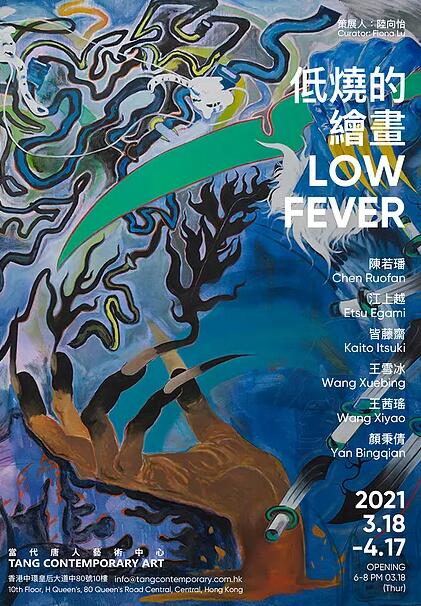
Tang Contemporary Art is proud to present “Low Fever,” the Hong Kong space’s first group exhibition of women artists born in the 1990s, on March 18. This show will present more than twenty works by six artists: Chen Ruofan, Etsu Egami, Kaito Itsuki, Wang Xuebing, Wang Xiyao, and Yan Bingqian.
Artists born in the 1990s grew up at a time when information technologies were developing rapidly, bureaucracy was being reduced, and knowledge was being shared in an egalitarian way. They matured as previous generations were establishing comparative methods for them. This generation of artists has now made its way into the contemporary art scene, and in a moment when gender has become a global focal point, women artists of this generation no longer merely articulate the distance or antagonism between the sexes in their paintings. Their methods are diverse meta-expressions; taking advantage of their times, these women artists have had the ability to make breakthroughs in meta-painting and “sexist” painting. More than any previous generation, those born in the 1990s find themselves in an intermediate state. When faced with attacks from both the past and future, what kinds of languages or attitudes should they employ? They keenly and casually move their brushes across the canvas, and their sensitive pre-emption of knee-jerk reactions to the “youth crisis” presents as a low-grade fever.
A low fever is a physical symptom that can be felt. Whether an artist confronts the larger predicaments of our era, the environment outside of art, or the issue of art itself, this feeling can be painted. Art is always a multi-sensory experience of the world, and sensation and the body are naturally enmeshed with one another. In a chapter entitled “Painting and Sensation,” Gilles Deleuze wrote, “What is painted on the canvas is the body, not insofar as it is represented as an object, but insofar as it is experienced as sustaining this sensation.”
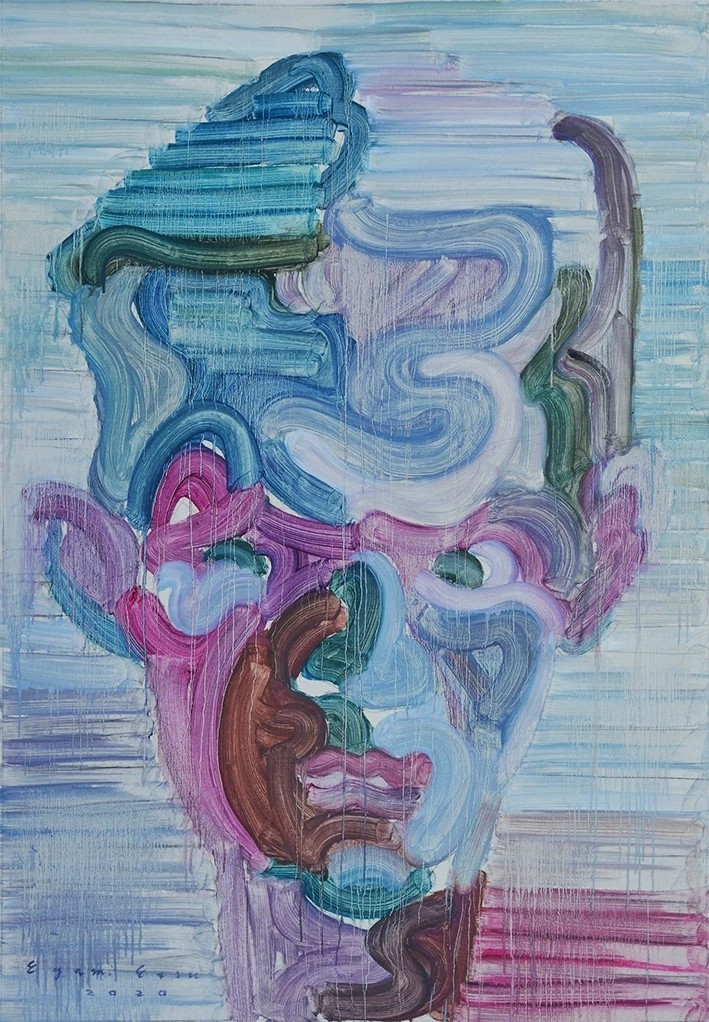
Etsu Egami, Temptation of Brushing Past
Oil on canvas, 165x114.5cm, 2021
Etsu Egami paints her Rainbow portraits with flowing colors, clean compositions, and strong brushwork. She has studied and lived in many countries around the world, and she has explored the essence of communication through personal experiences of mishearing and misreading. She believes that the language of rainbows really resonates with her state of mind; it has become a symbolic language for communication that has gradually permeated her painting style.
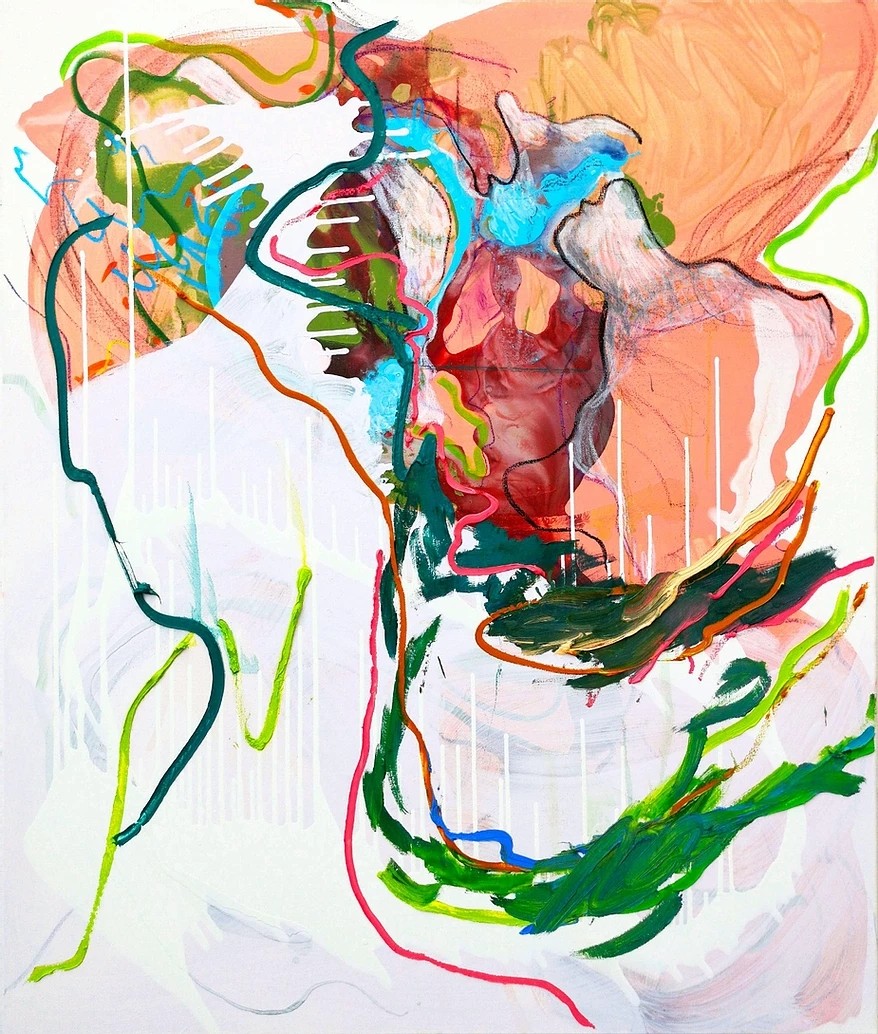
Wang Xiyao, Give you a piece of the pink sea no.1
Acrylic, oil and crayon on canvas, 130x110cm, 2020
With ropey, relaxed lines and bright colors, Wang Xiyao conveys living passion and movement to the outside world, through the limited space and form of the painted canvas. Within the process of painting, she focuses on maintaining a relationship between the canvas and the body despite unbounded physical displacement. Balanced movement, the tension produced by movement, the resilience created by an internal tautness and control, and the support and complementarity of this resilience allows her to find and contrast balance and imbalance in the intervals between energies.
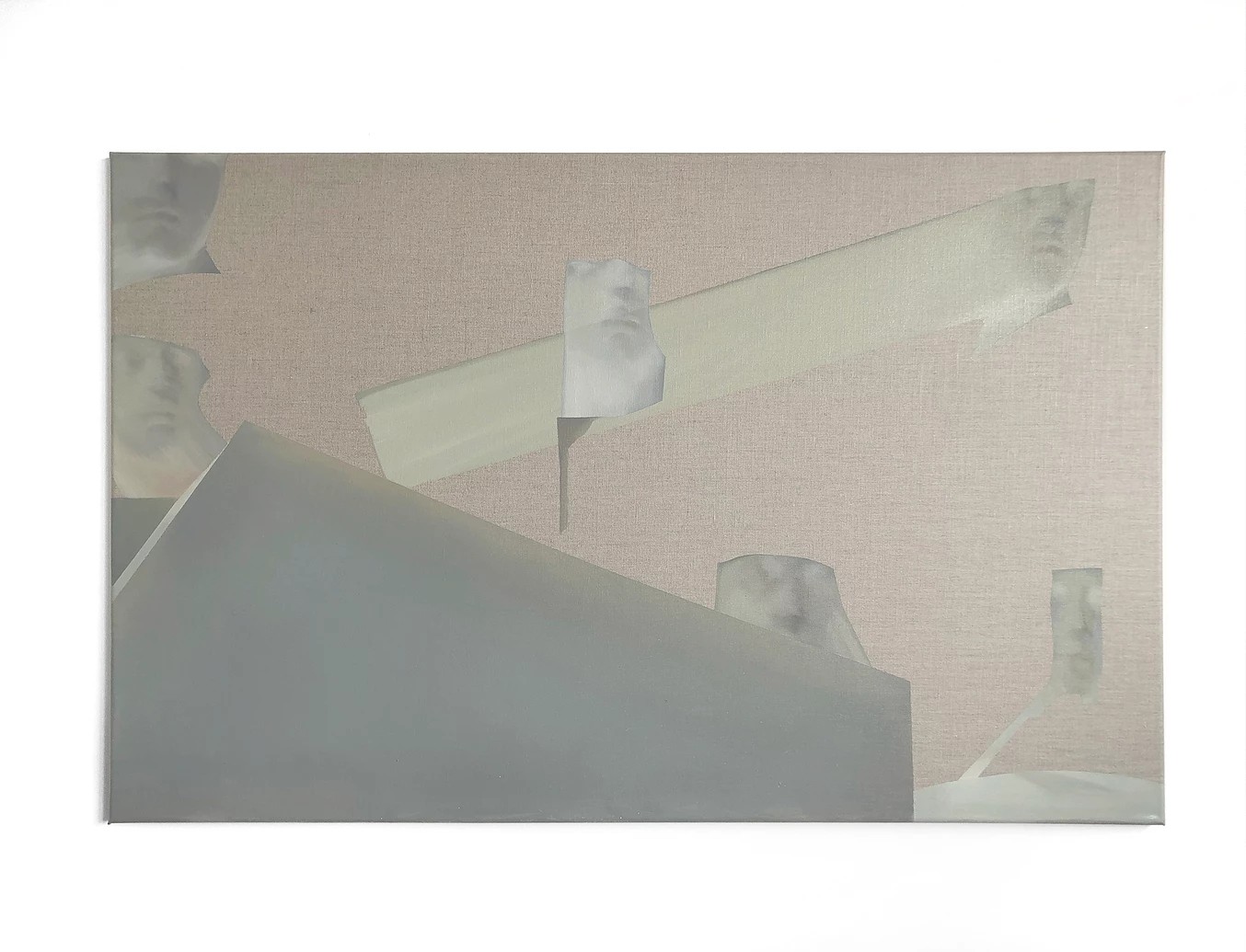
Chen Ruofan, Unknown Sense-Still life from the screen of iPhone X, November 2020
Oil on canvas, 60.96x76.2cm, 2020
In White Peach’s microscopic compositions of obscure bodily forms and in Unknown Sense’s minute considerations of humanity’s existence between technology and reality, Chen Ruofan explores the digital through muted tones and a fusion of new media and traditional techniques. She asks: In a cyborg human society, how much of life can truly be felt?
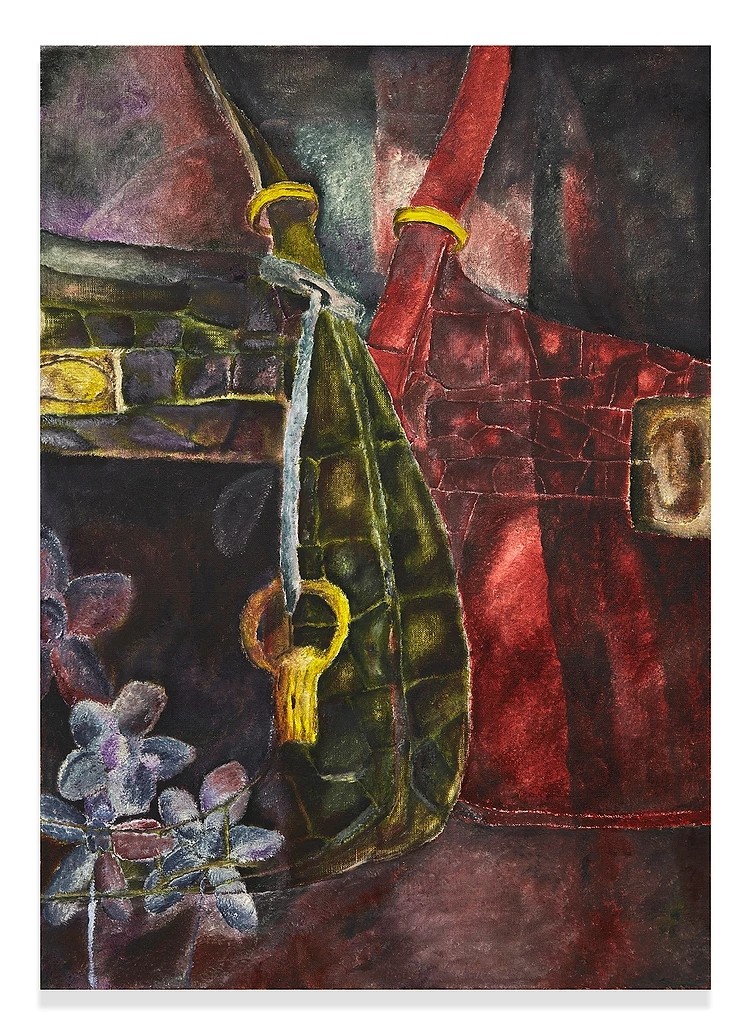
Wang Xuebing, Secret Hell
Oil on canvas, 70x50cm, 2020
Wang Xuebing is inspired by the use of high-contrast colored lighting in Dario Argento’s horror films, which strengthens the visual effects of color and light. She paints the handbags, jewelry, and fashions from luxury goods advertisements; the objects are relocated and made ambiguous, and their unbalanced or absurd proportions in the paintings make them seem oversized, fragmented, or thick. She explores the possibilities between the worthless and the luxurious, as well as the multiplicity of fictions and realities.
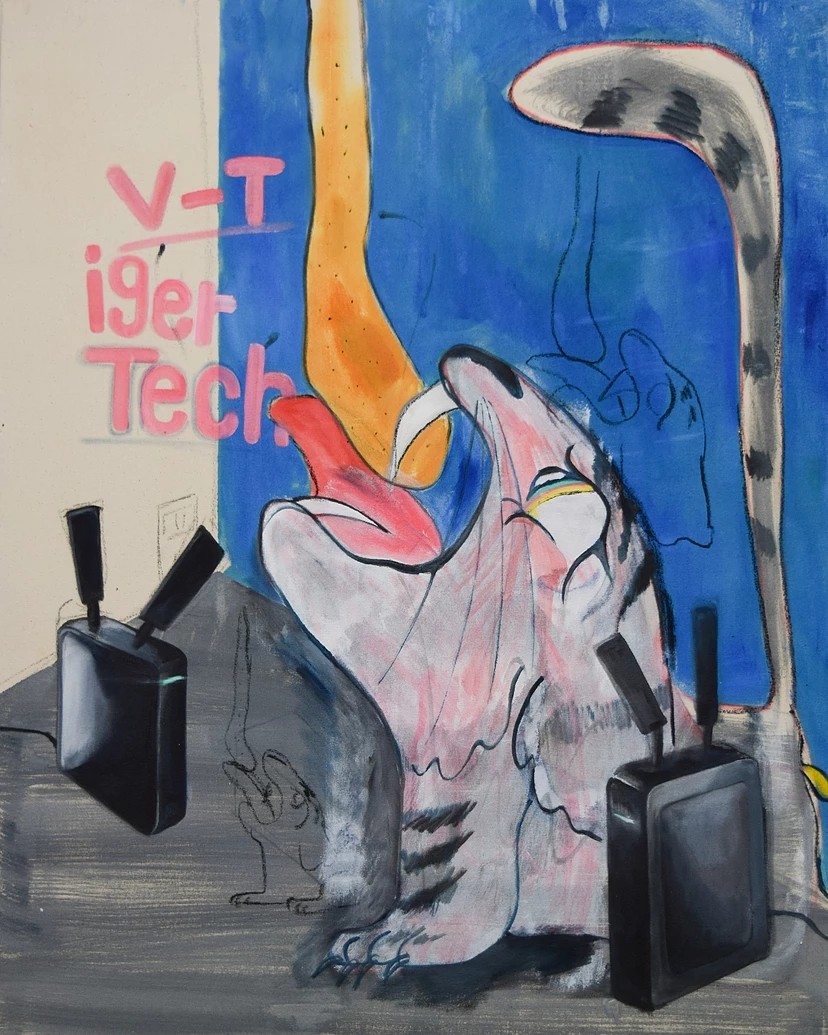
Kaito Itsuki, V-Tiger Tech
Oil and charcoal on canvas, 91x72cm, 2017
In her paintings, Kaito Itsuki creates new mythological figures and fictional organisms. They symbolize the states of the human soul, and by highlighting the deformity or alienation of these states, she reflects the process of human self-identification. She discusses how people should create their own specific identities and use mythology as a metaphor to analyze some of these unintelligible human behaviors.
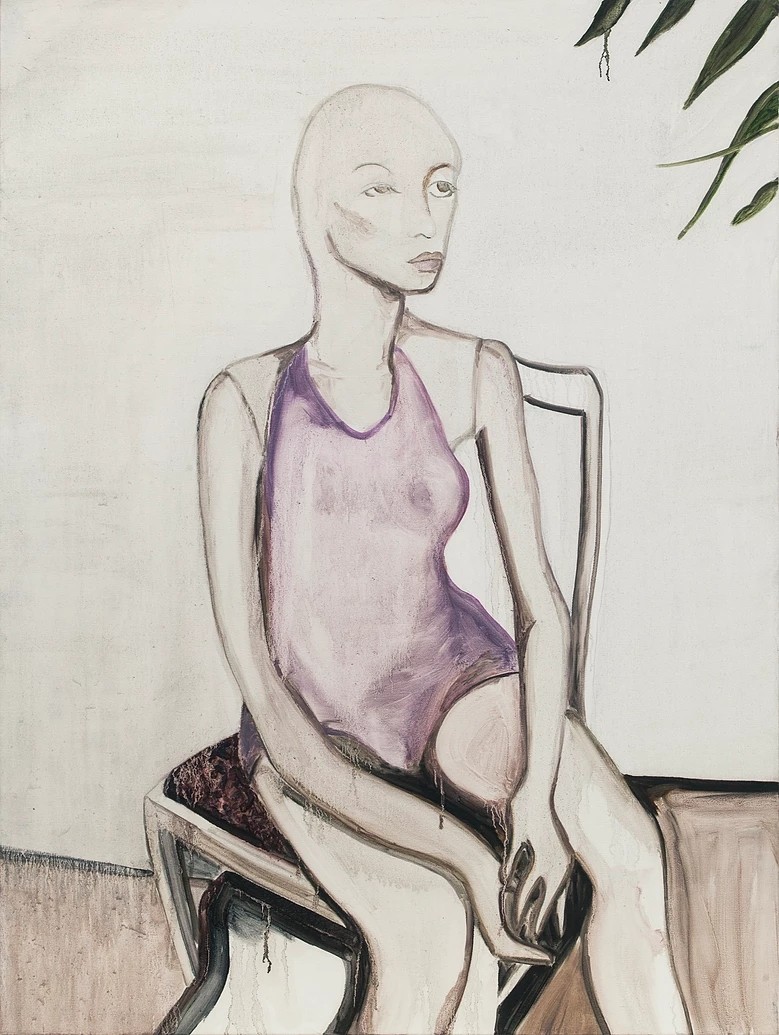
Yan Bingqian, Untitled
Oil on canvas, 120x90cm, 2017
Sequences of people and things can change, and Yan Bingqian chooses to describe them in a restrained way. Atmospheric linear brushstrokes, indistinct substances, and extremely emotional visual rhetoric coexist in her work.
About the exhibition
Curated by Lu Xiangyi
Dates: 3.18 - 4.17, 2021
Venue: Tang Contemporary Art, Hong Kong
Artists: Chen Ruofan / Etsu Egami / Kaito Itsuki / Wang Xuebing / Wang Xiyao / Yan Bingqian
Courtesy of the artists and Tang Contemporary Art, for further information please visit www.tangcontemporary.com.




























